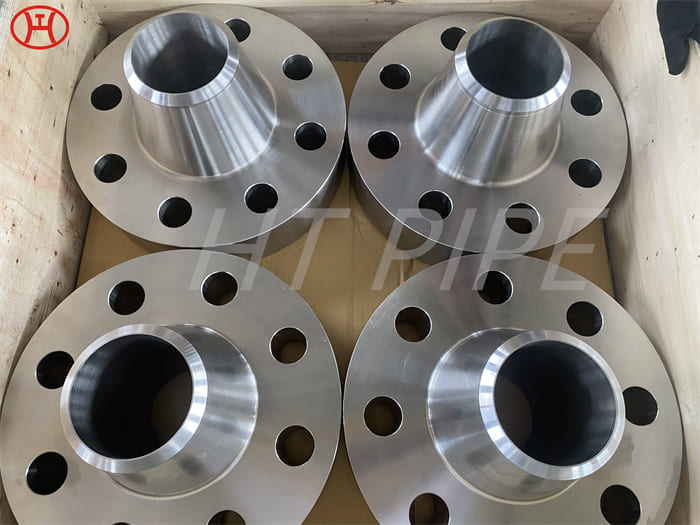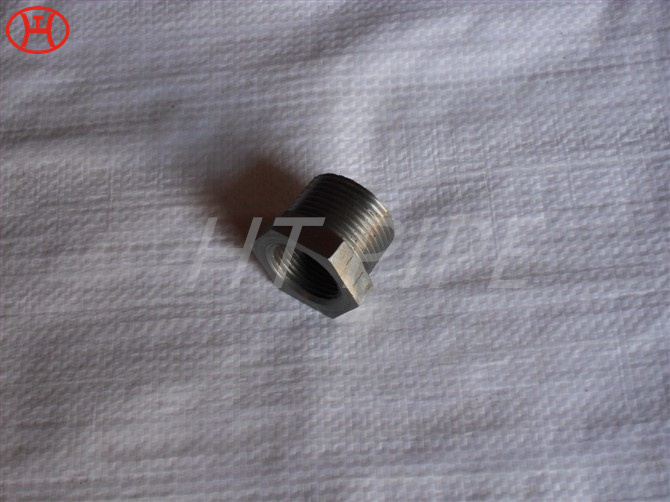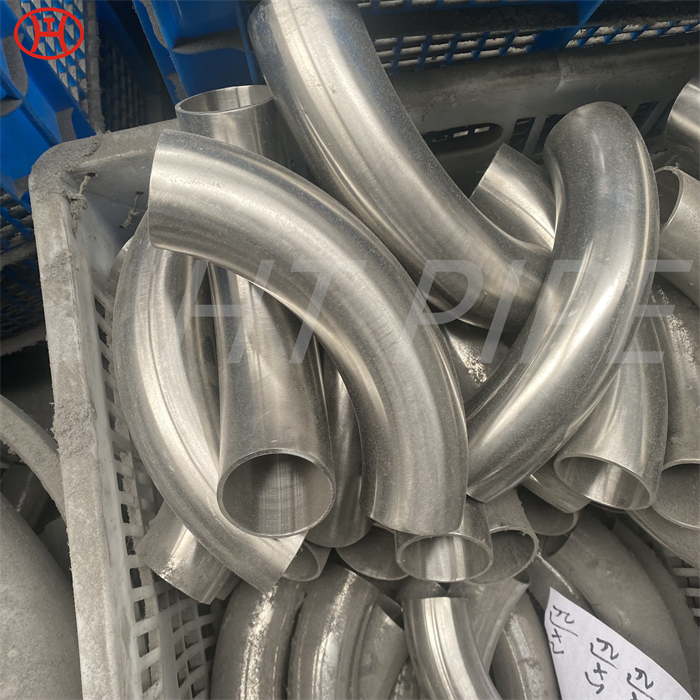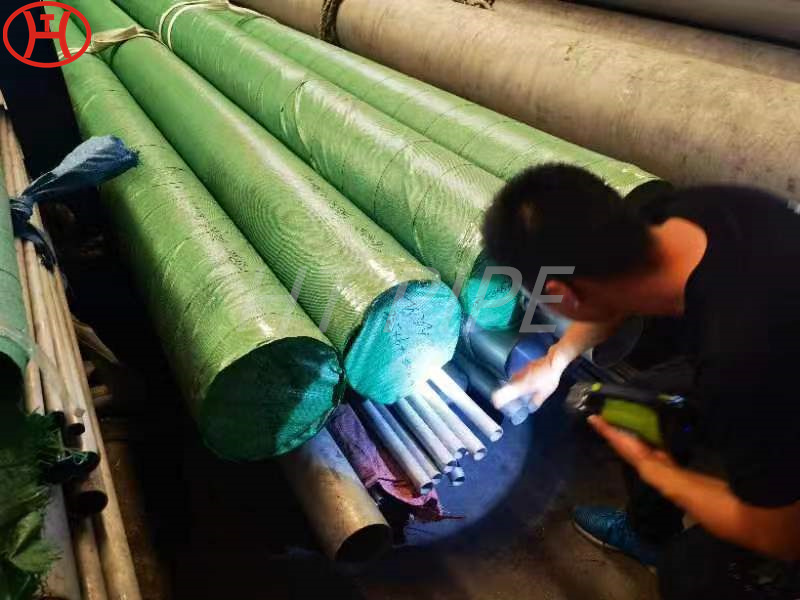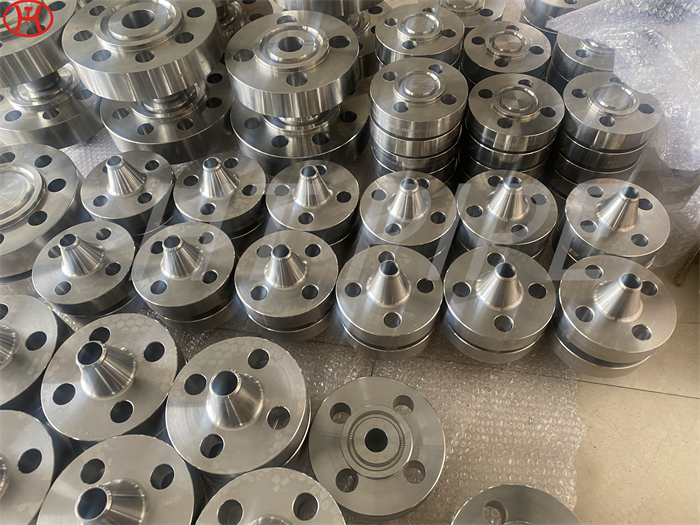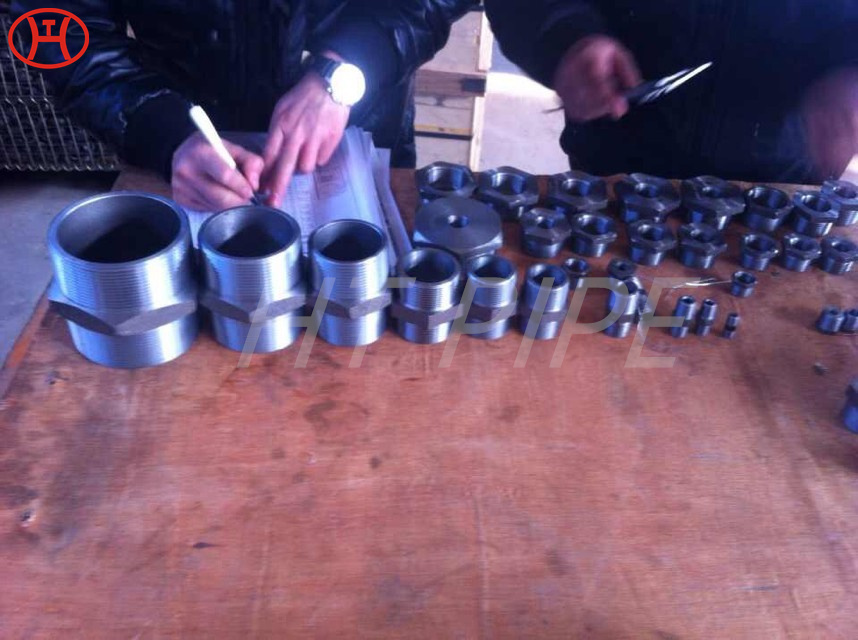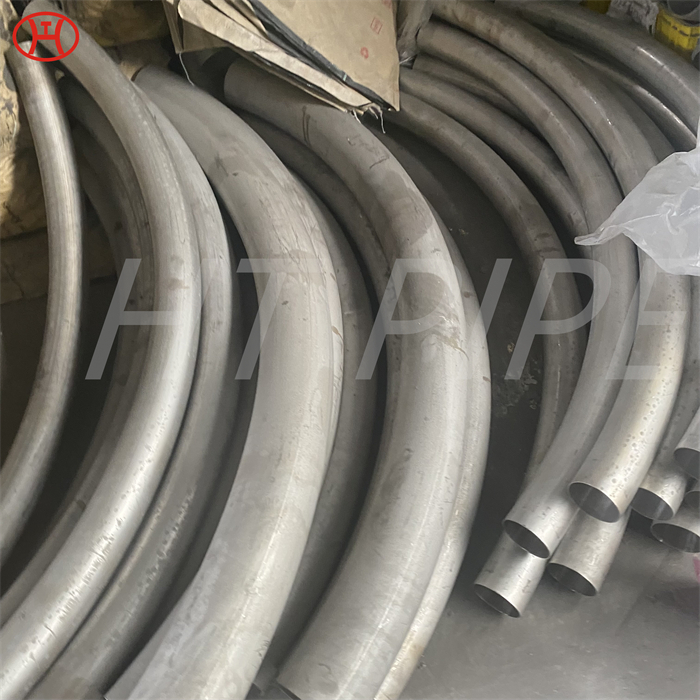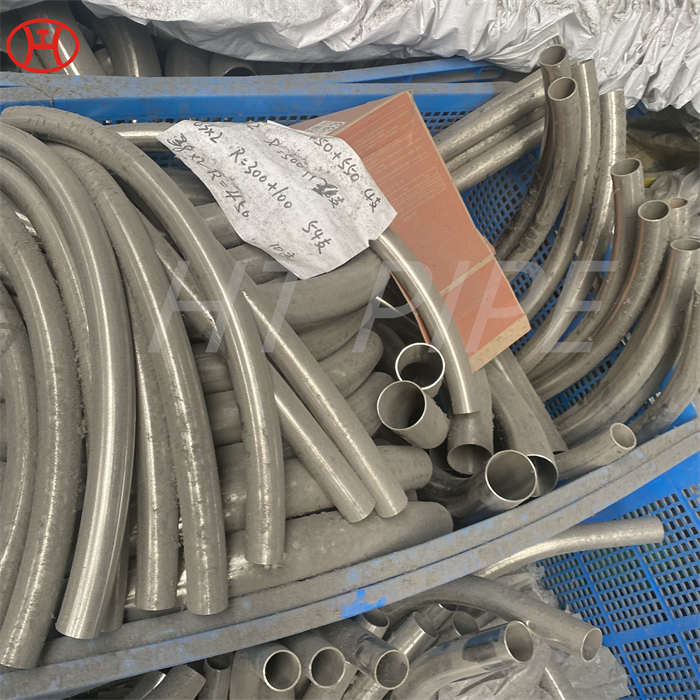Hastelloy C22 pipe bend Pipe fittings of the Hastelloy C22 grade
The high chromium content provides good resistance to oxidizing media while the molybdenum and tungsten content give good resistance to reducing media.
Hastelloy C-22 pipe bend is covered by ASME . Plate, sheet, strip, bar, tubing, and pipe are covered by ASME specifications SB-574, SB-575, SB-619, SB-622 and SB-626 and by ASTM specifications B-574, B-575, B-619, B-622 and B-626. The UNS number is NO6022. Nickel base corrosion, temperature and wear-resistant alloys are classified as moderate to difficult when machining, however, it should be emphasized that these alloys can be machined using conventional production methods at satisfactory rates. During machining these alloys work harden rapidly, generate high heat during cutting, weld to the cutting tool surface and offer high resistance to metal removal. Some of the area of present or potential use for alloy C-22 are: Acetic acid/Acetic Anhydride, cellophane manufacturing, chlorine spargers, chlorination systems, circuit board etching equipment, complex acid/chemical mixtures, fans and blowers, galvanizing line equipment, gas scrubber systems, geothermal wells, HF furnaces, incineration systems, nuclear fuel reprocessing, pesticide production, phosphoric acid applications, pickling system components, plate heat exchangers, selective leaching systems, sulfur oxide cooling towers, sulfonation systems, and tubular heat exchangers.

















































































































